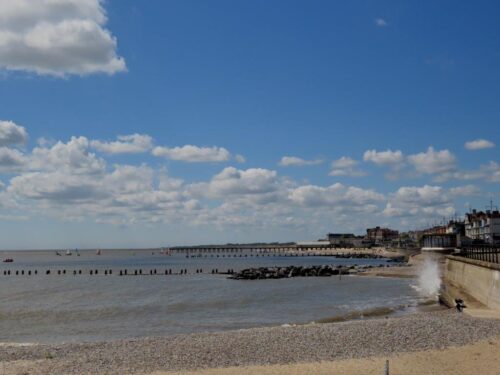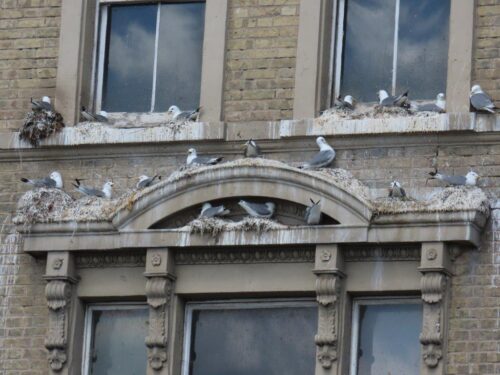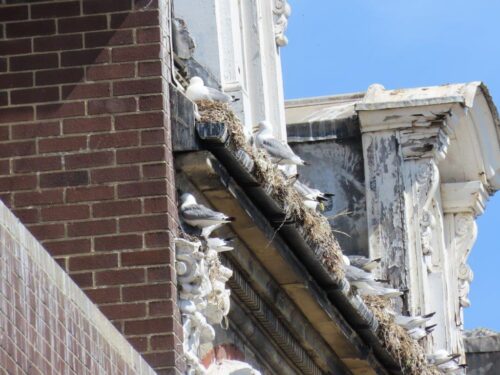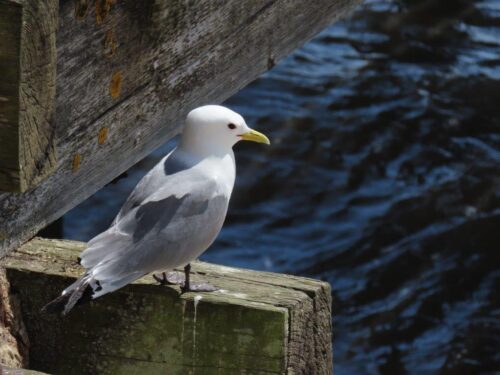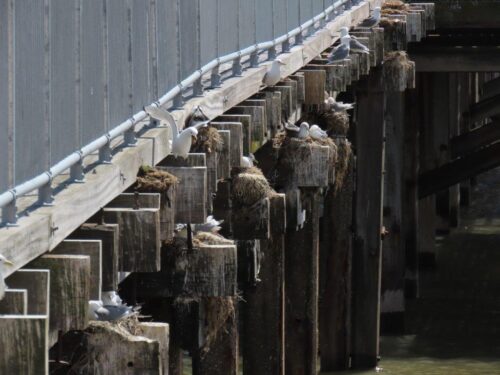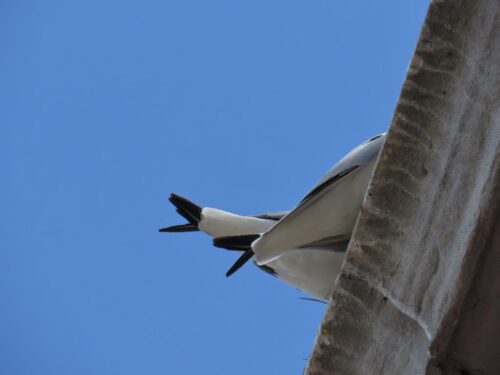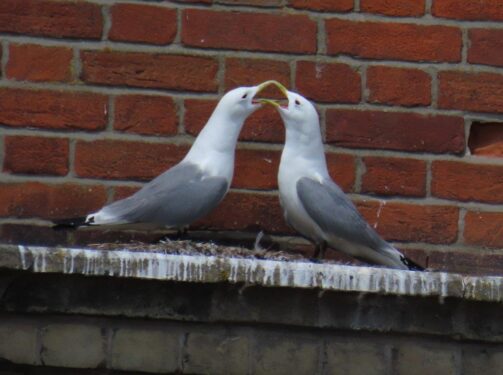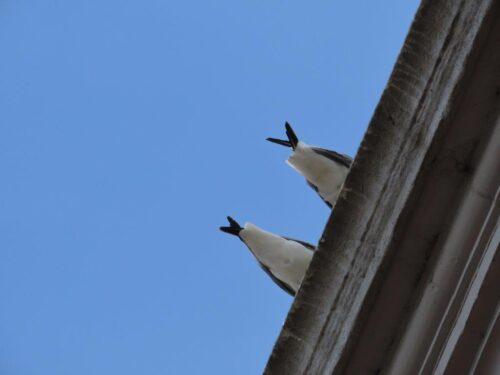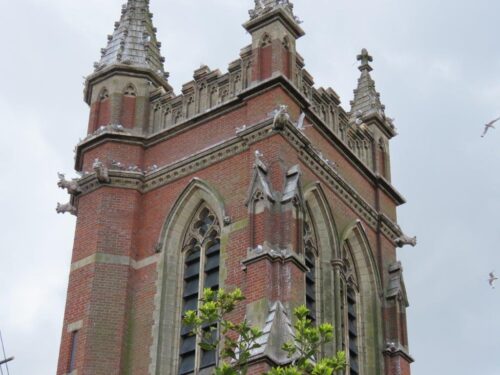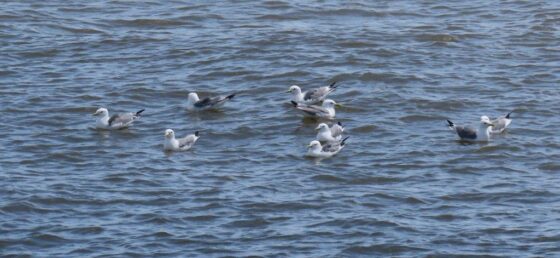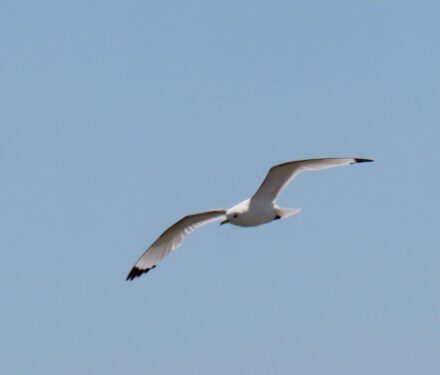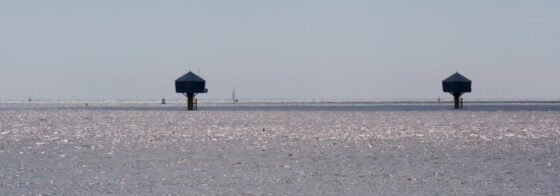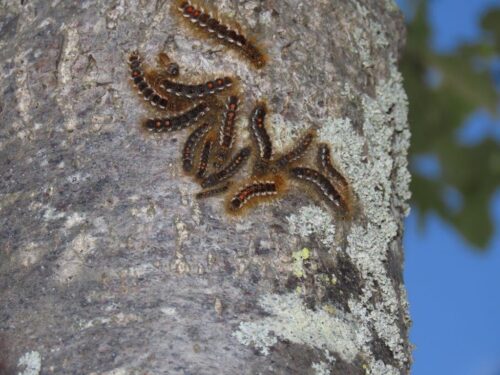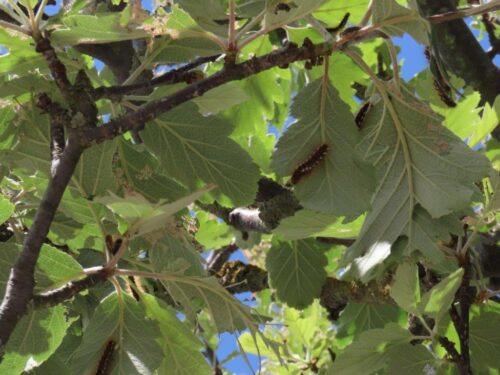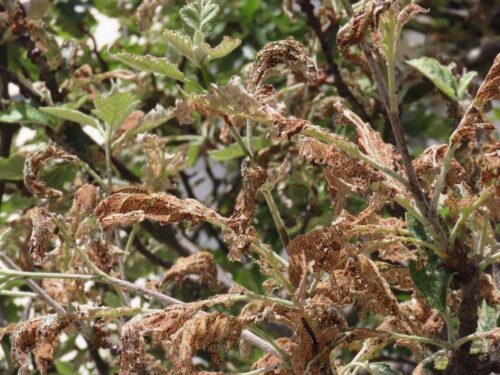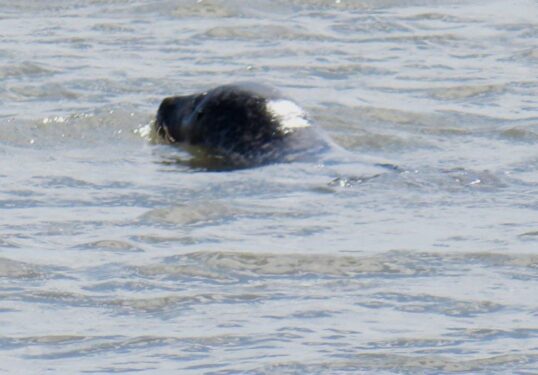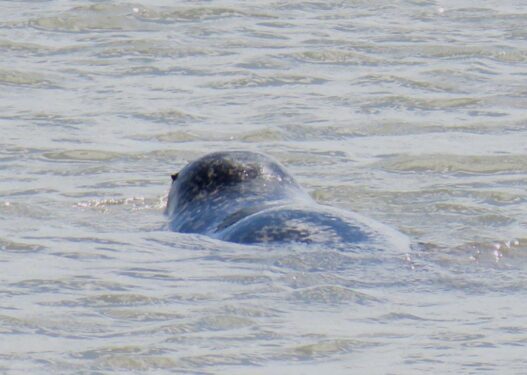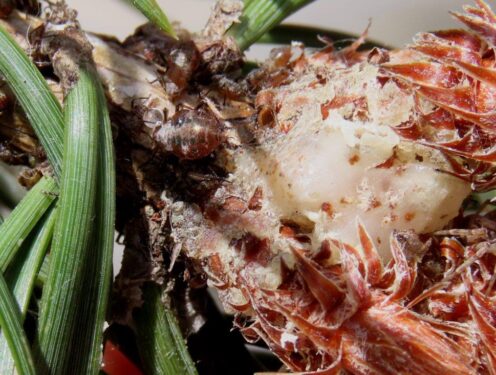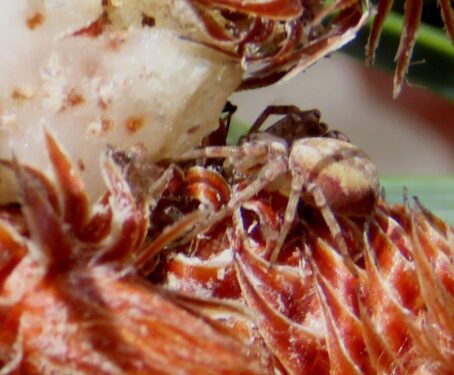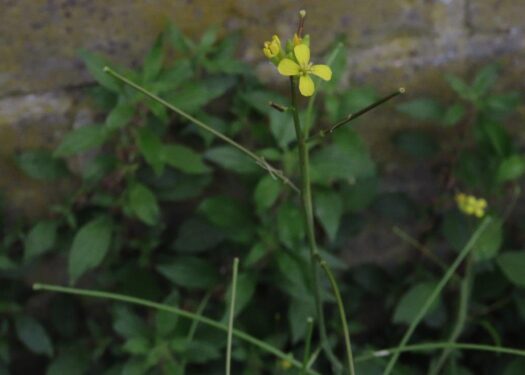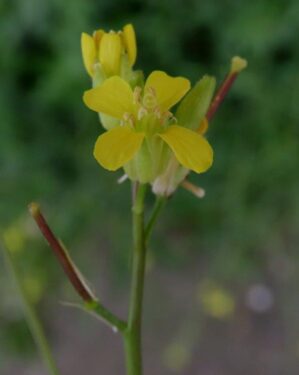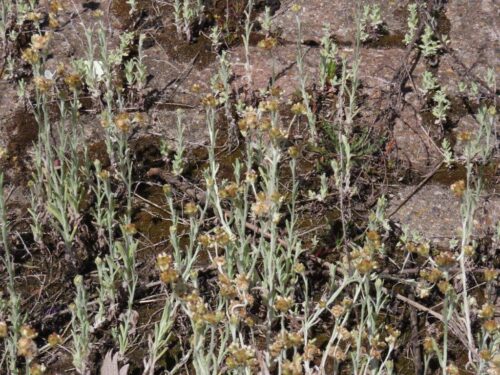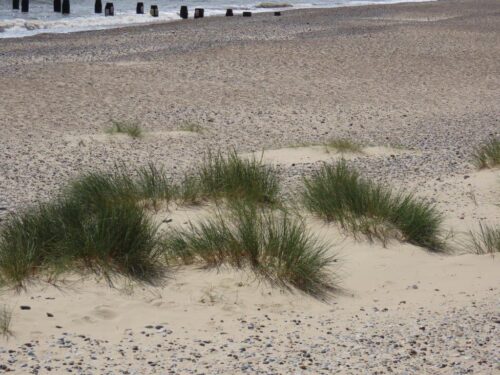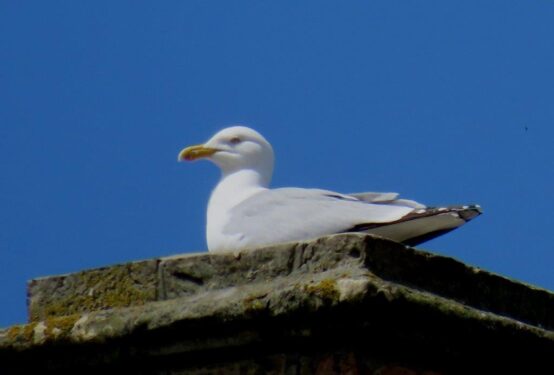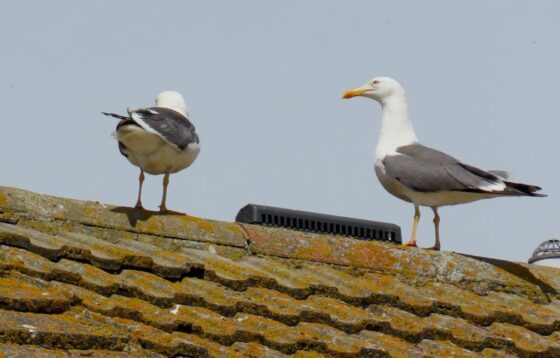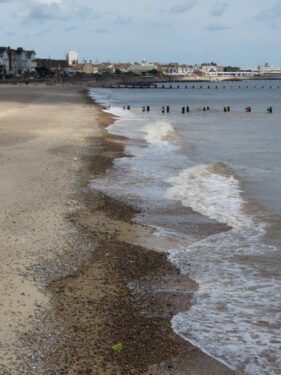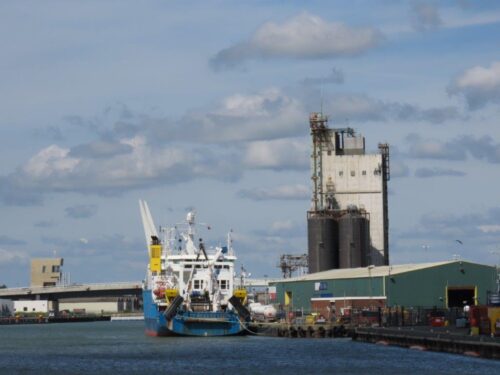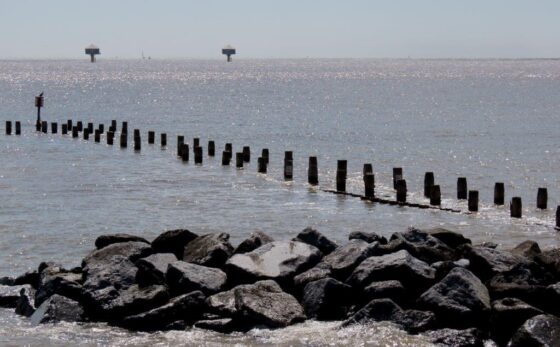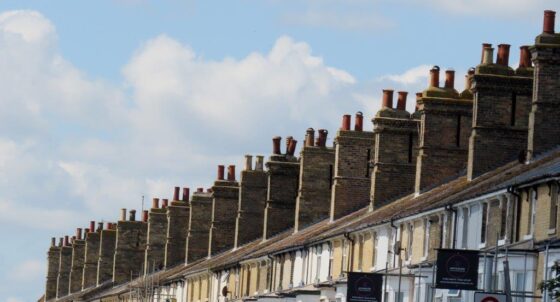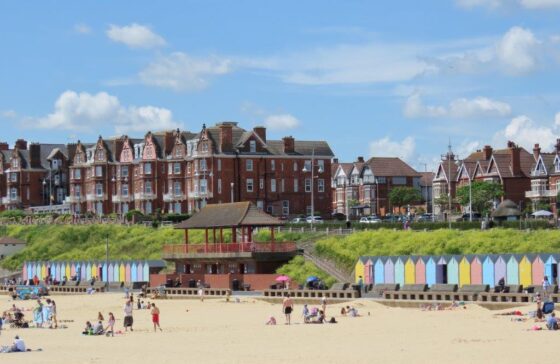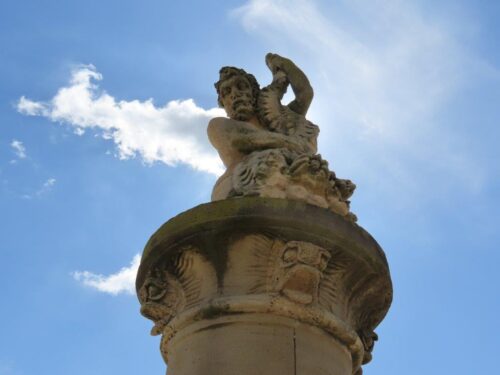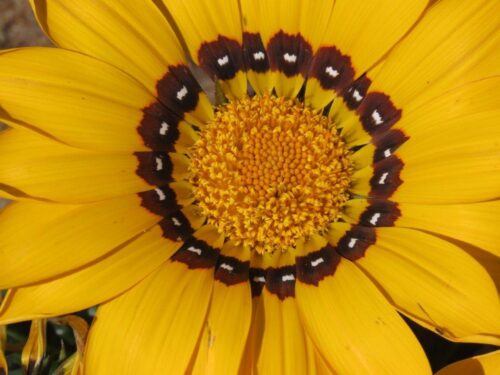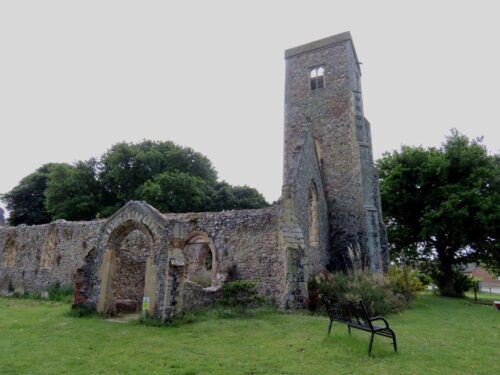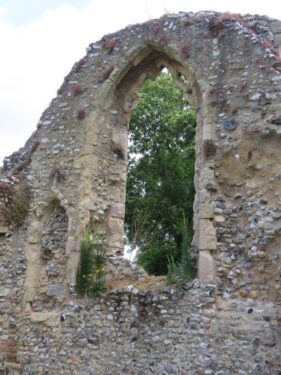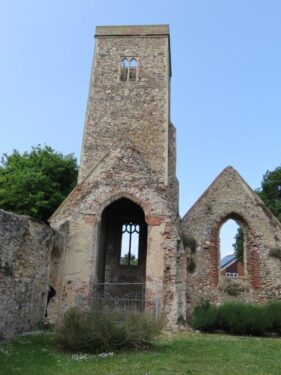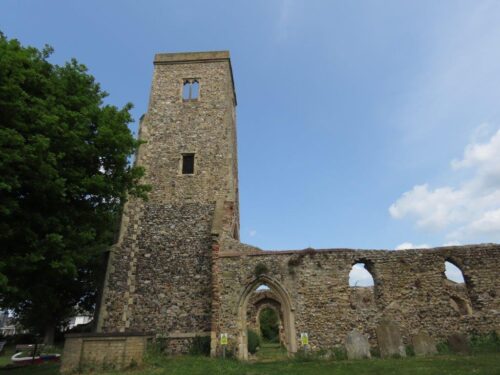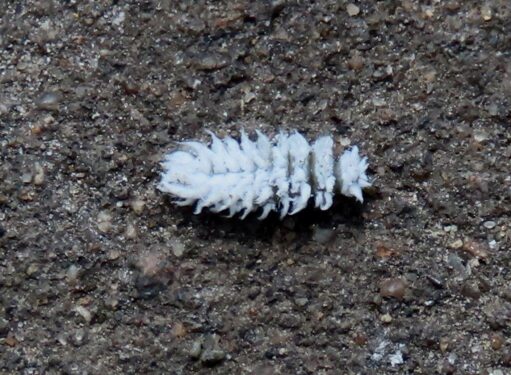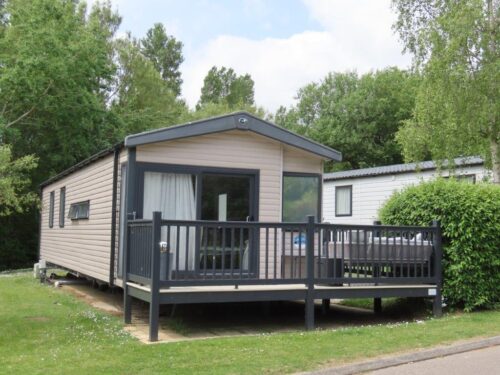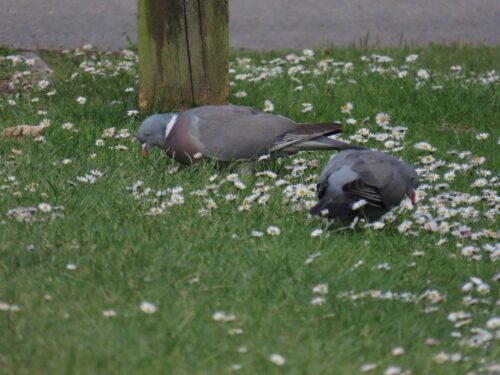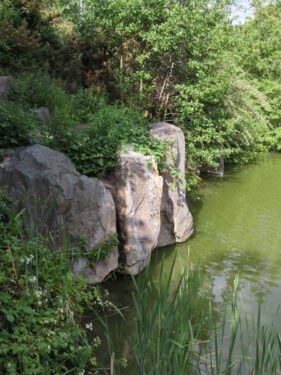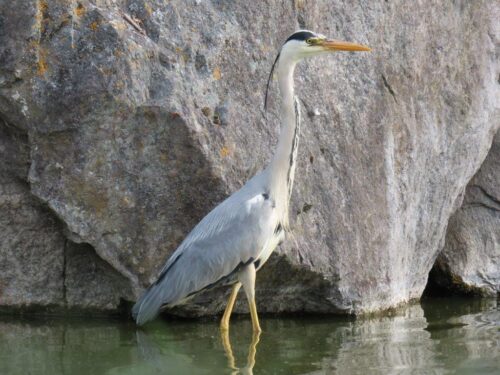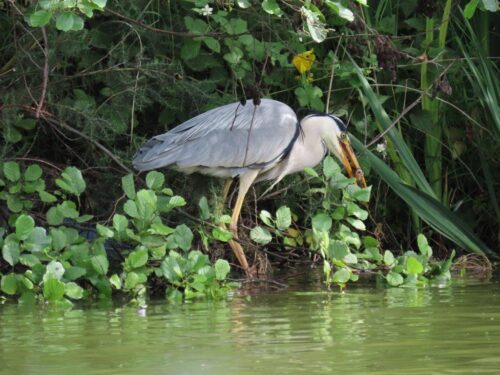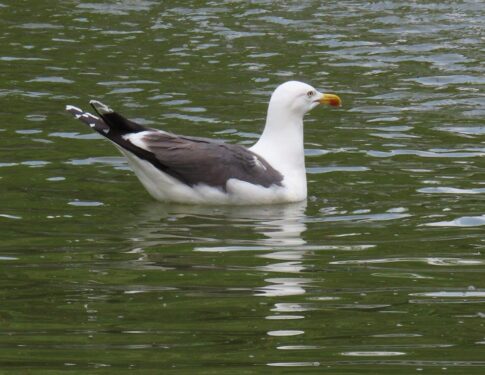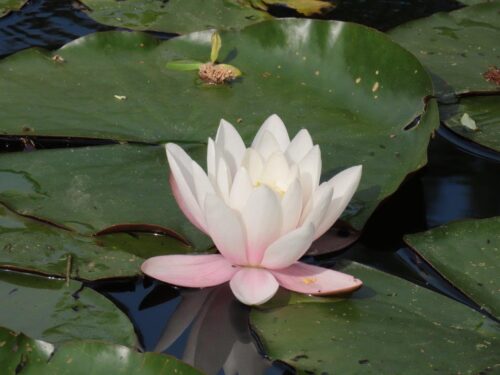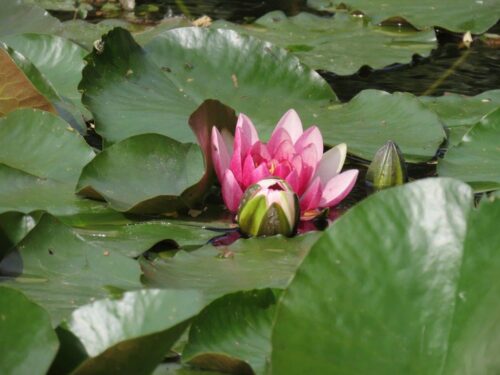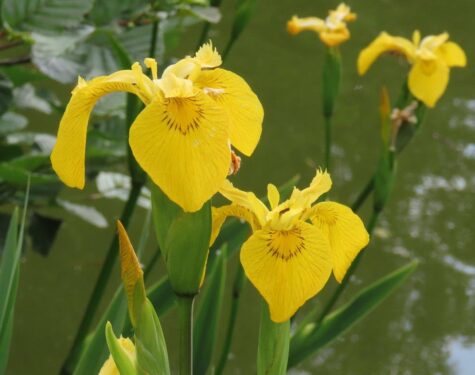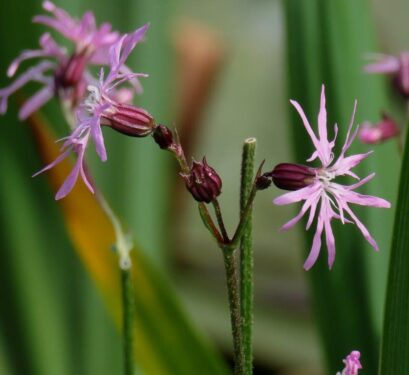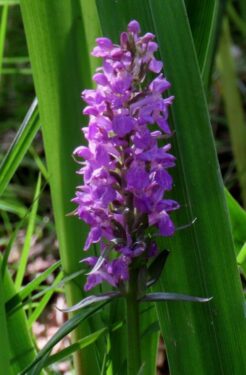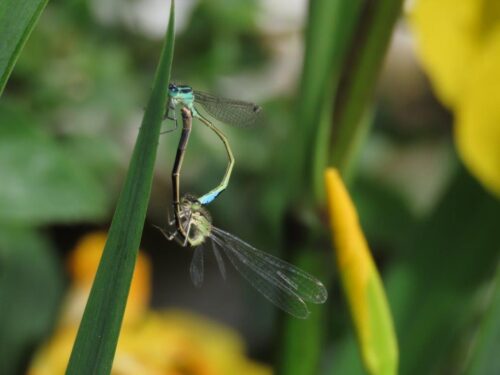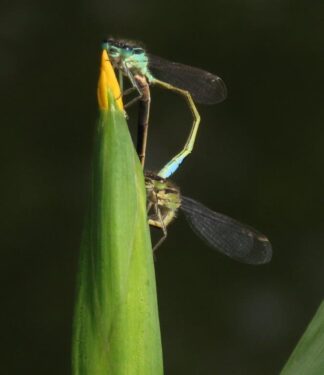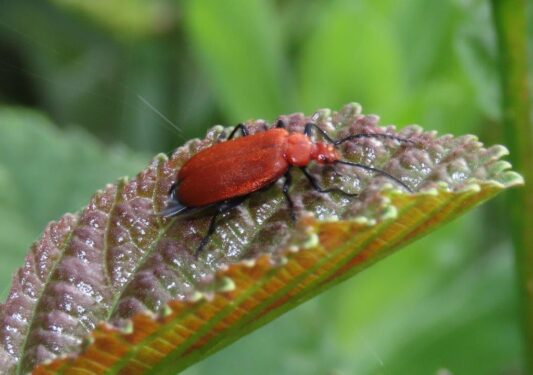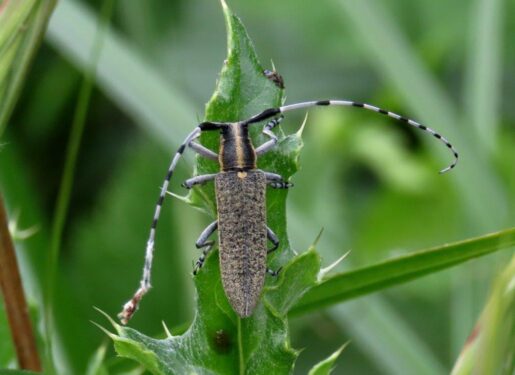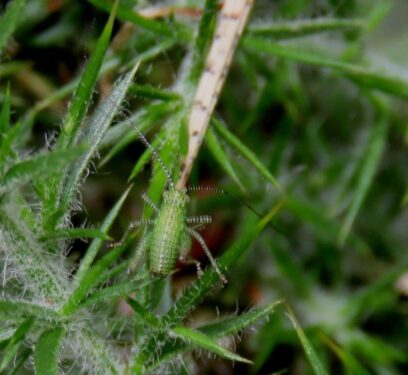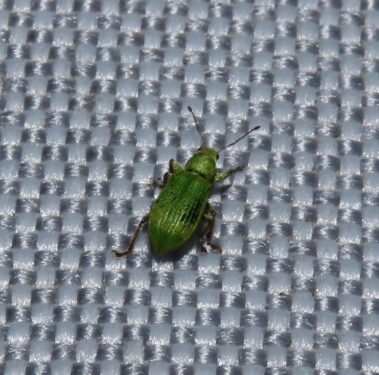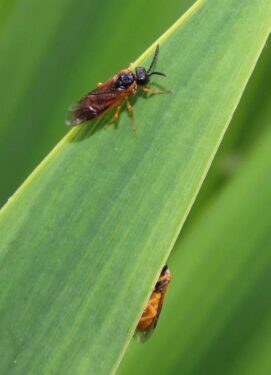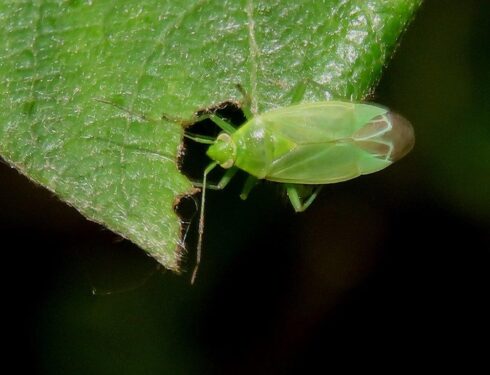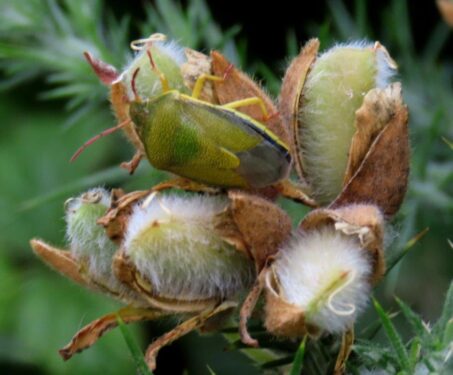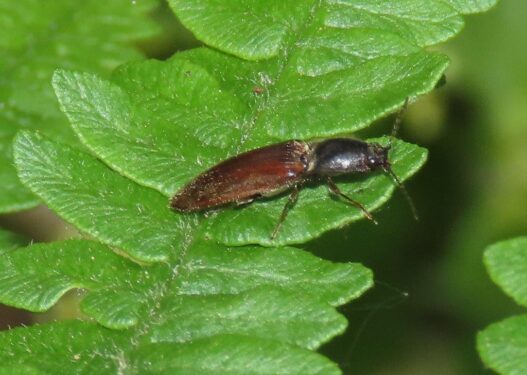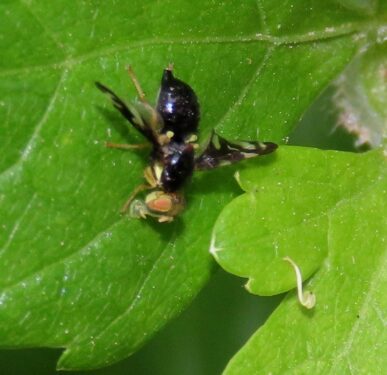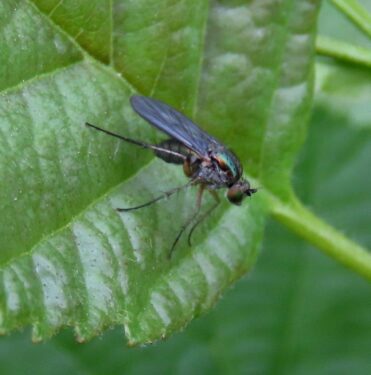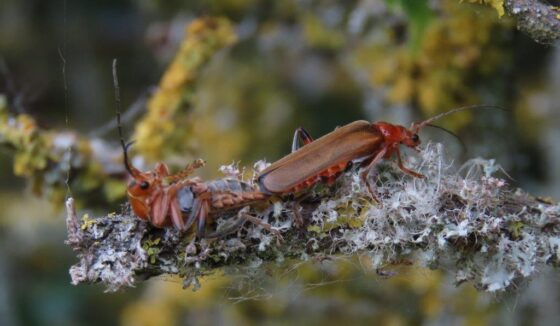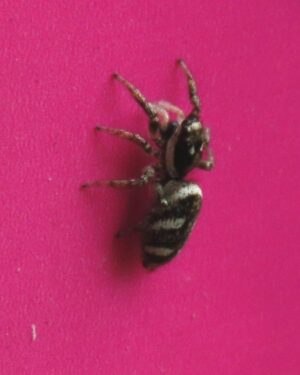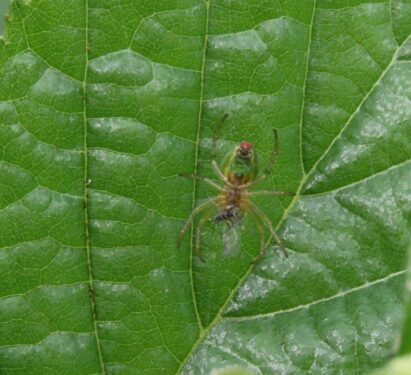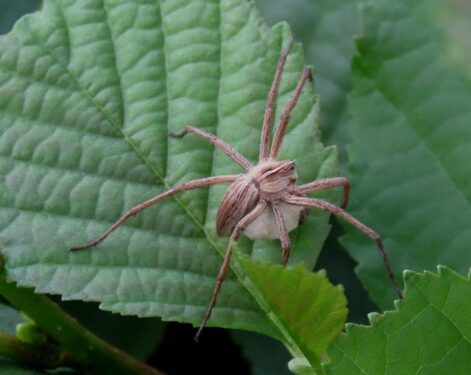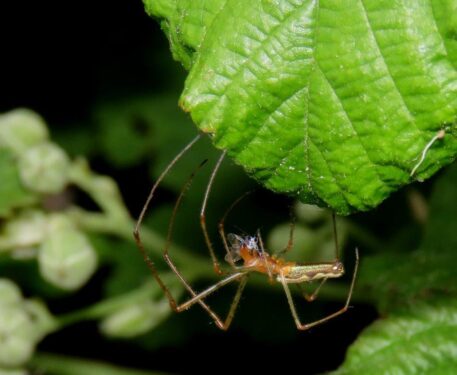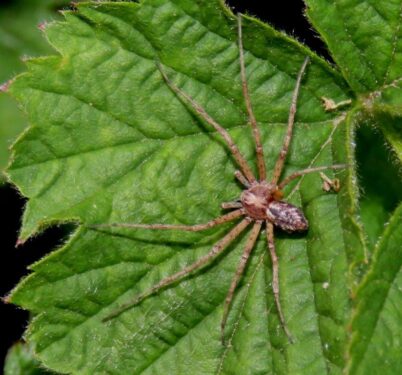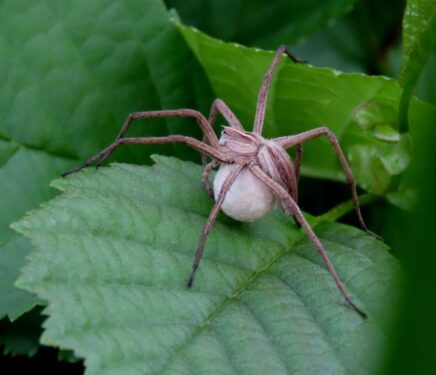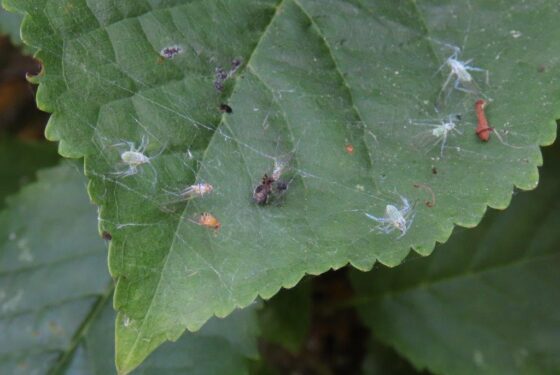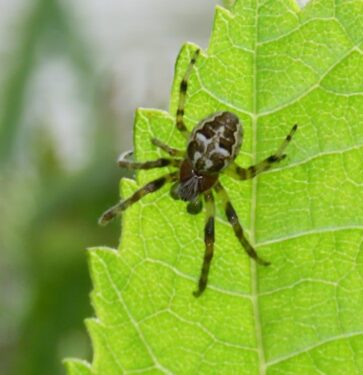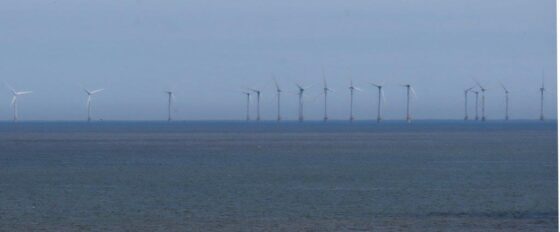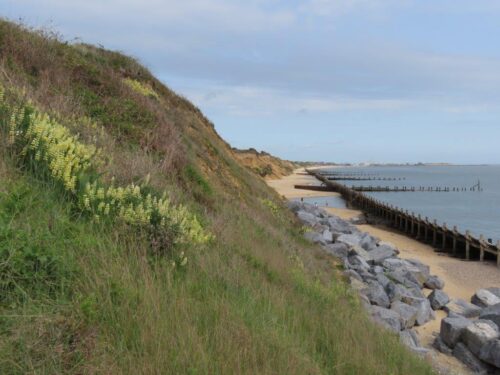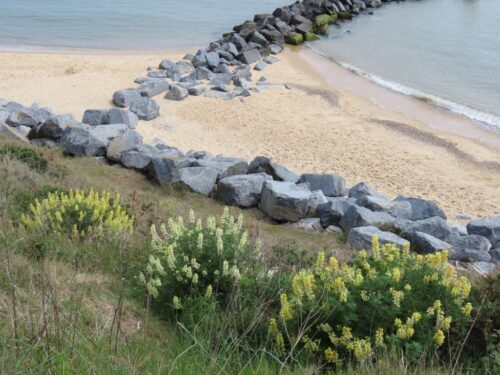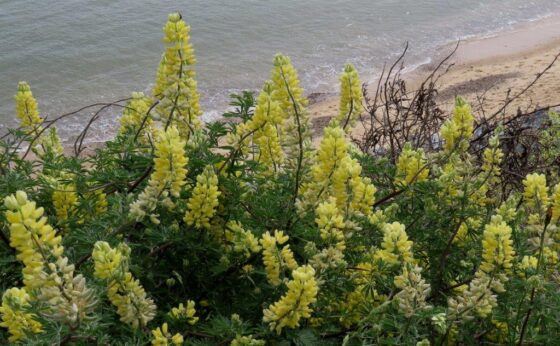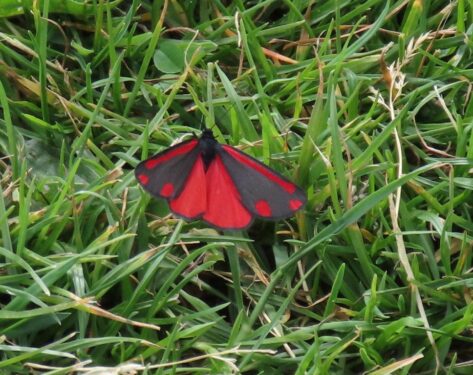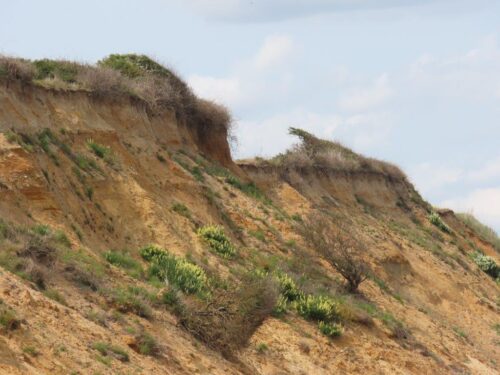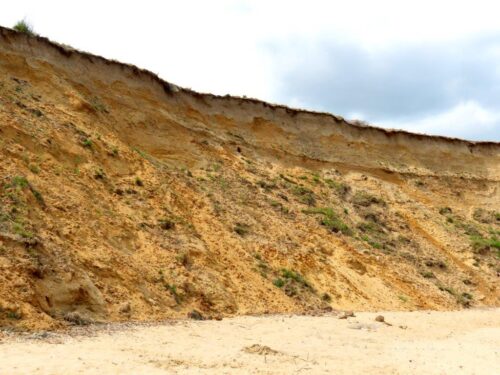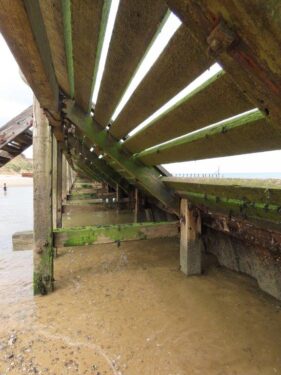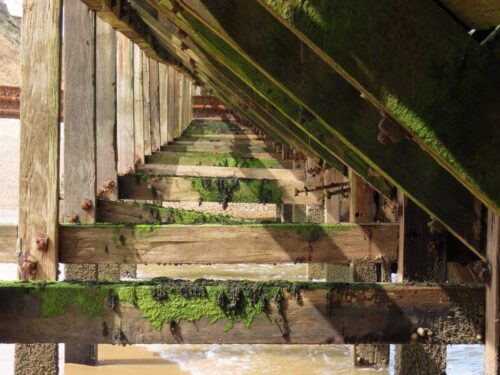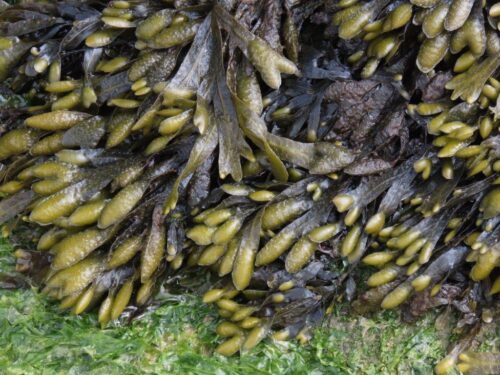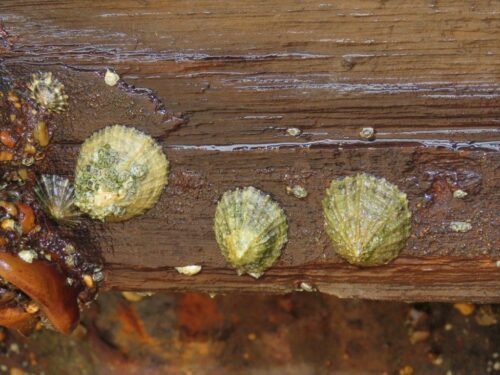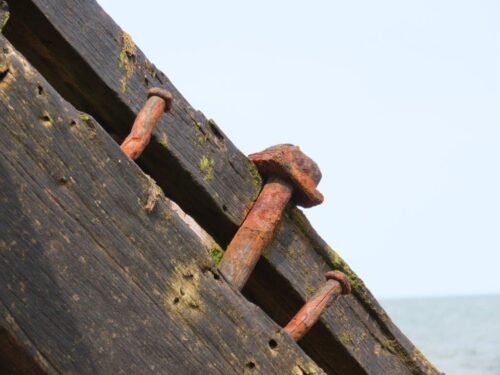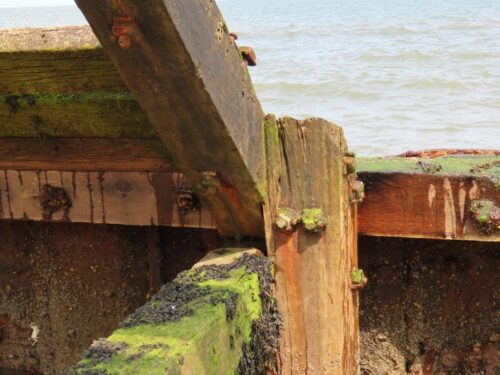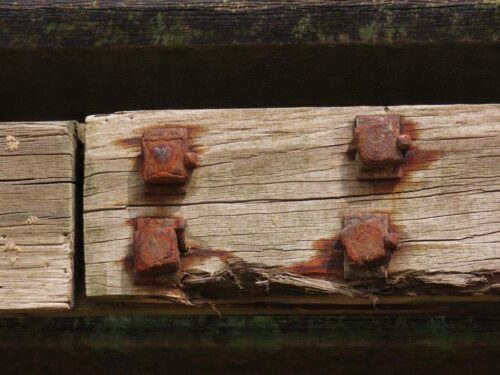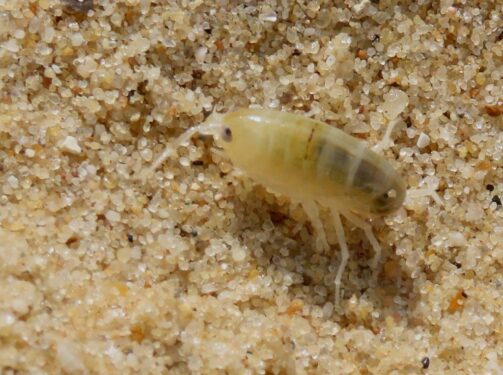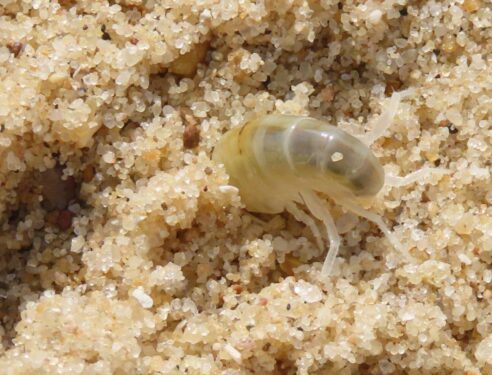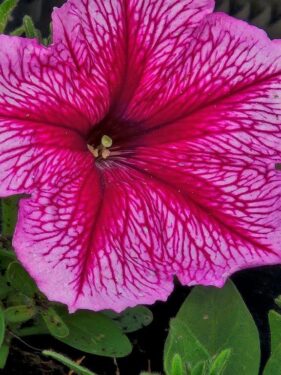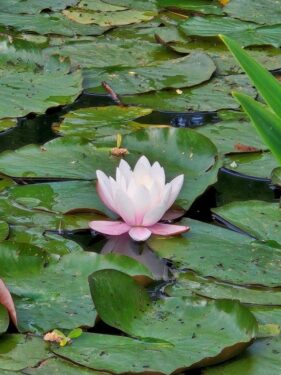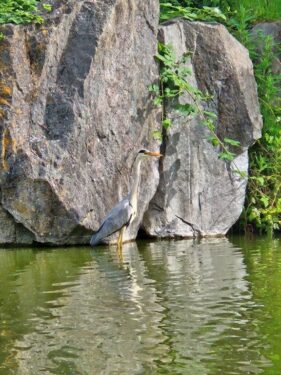Between our May and June short breaks, as far south (Isle of Wight) and as far west (Haverfordwest) as possible, respectively, we had a free week, and so an opportunity for another cheeky little break – just two nights, with Eleanor and her mum. A holiday camp in half-term might not sound like everyone’s idea of fun, but the weather was lovely and the Hopton Beach holiday camp, between Lowestoft and Great Yarmouth a lot greener than one’s prejudice might suggest.
The train to Lowestoft was a delight, a landscape never before experienced by us in that mode of travel. And as soon as we disembarked, our experience was transformed by the sound of Kittiwakes, a bird call that just speaks to me of my childhood around Bridlington.
Kittiwakes breeding everywhere, on the piers, on the seafront buildings, and even a little way inland on a church. I had no idea they had colonised like this since my last visit. Seems that, while birds have nested on the harbour since the late 1950s, the move into the town, perhaps triggered by Fox predation, and subsequent rapid population growth to around a thousand pairs has happened over the past decade. And this is important: over the time that Kittiwakes have colonised Lowestoft, the UK population has fallen by some 40% for a variety of reasons, probably mainly linked to the effect of climate change/sea temperature rises on their food.
While Kittiwakes feed only at sea, and won’t attack ice creams, bags of chips, small dogs or babies as urban nesting Herring and Lesser Black-backed Gulls are variously accused of, they do of course make deposits below their nests and so are not universally welcomed. But it was pleasure not to see a town bristling with anti-bird spikes or festooned in potentially lethal netting, testament no doubt to the work of the local Kittiwake project that not only helps clear away mess from the streets but also provides advice on how to love and live alongside these gentle bundles of feathers that are the very spirit of the the wild sea.
There are other mitigations, including the provision of nesting hotels, both in the town and out at sea. Seems however that the success of the offshore ones is somewhat limited so far.
And in another example of apparent tolerance of nature that others revile or fear, there was much evidence along parts of the prom of defoliation of street trees (Sorbus) by Brown-tail Moths. And there were caterpillars everywhere, on trunks, seats and benches, but not a single sign saying ‘Danger’ or ‘Keep Away’. The sign of an enlightened populus that knows its place within nature? Or a council that is so cash-strapped it hasn’t the capacity? I hope it is the former.
Other life on the seafront included a Harbour Seal in the harbour mouth; Waxy Pine Aphids and a Philodromus spider on ornamental pines; edgelands in bloom with Eastern Rocket, so typical of ports, and Jersey Cudweed, now a constant feature of block-paving in East Anglia; grass growing on the beach, seemingly a trigger for ecocide in some coastal areas; and of course urban larger gulls.
And quite apart from the natural, there is always something reassuringly familiar about ‘British Seaside Architecture’… from working portscapes to ornamental flower beds:
So after a very entertaining couple of hours it was on the bus north, eventually to Hopton-on-sea, over the border into Norfolk. The first thing you see is the ruined church, which of course we couldn’t resist, along with the Turnstone pub (ditto!).
Near there, a strange creature running across a pavement. At first glance a mealybug (a sapsucker of ornamental plants), this actually seems to be a Mealybug Destroyer, larva of an Australian ladybird used in this country, especially in glasshouses, as a biological control agent.
And then, heading towards the sea, the holiday camp. Large, busy, all one would expect at half term, but set in rather pleasant surroundings.
Right next to to our van a pond with Heron and occasional other visitors. And here and around other onsite pond, here were damselflies and other insects, a flowering Southern Marsh Orchid and other marshland plants.
Other insects were enjoying basking on the hedges and bushes, including most impressively several Red-headed Cardinal beetles and a Golden-bloomed Longhorn…
… along with a good number of various spiders.
An afternoon on the beach was delightful, from soft cliff slopes covered in Tree Lupins and clifftop turf lit up by the occasional Cinnabar moth….
On one of the the most erosive stretches of the British coast, there are extensive sea defences aimed at reducing erosion of the sandy cliffs, and inadvertently providing habitat for Limpets and brown seaweeds that simply could not otherwise exist on this soft interface between land and sea.
And as so often, the delight was in the details, from the rusting metal among splintering timbers, right down to the Sandhopper Talitrus saltator busying and burying itself in the sandy beach itself…
The journey home was via Norwich. Again, the Lowestoft to Norwich line was not known to us previously, but lovely: across Halvergate marshes, up the Yare valley with sightings of Marsh Harrier, Brown Hares. Roe and Chinese Water Deers. A fitting finale to an unexpectedly lovely break.
And of course here is the chance to showcase just a few of Eleanor’s photos!
